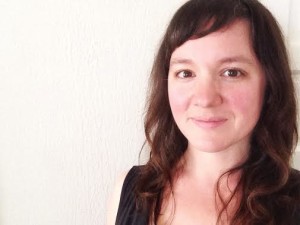In January, the Sadhana Studies program officially kicked off with a long weekend filled with asana, pranayama and discussions of the history and philosophy of yoga. For many of us, embarking upon this intensive program is the first step in developing the knowledge and discipline to become dedicated students of yoga. For others of us, we are are starting or continuing the process of becoming Certified Iyengar Yoga Teachers while deepening our own practice.
Sadhana is often defined as practice. This definition is more accurately captured by the term abhyasa, meaning constant practice. But there’s more to the notion of sadhana than simply going through the motions of a physical asana practice. In Light on Yoga, BKS Iyengar described sadhana as the key to freedom through regular, devoted practice that is spiritual nature.
Many people are drawn to yoga because of the physical and health benefits possible through a regular asana practice. I often think of asana as the gateway yogic practice. By practicing asanas, Mr. Iyengar said, our physical disabilities and mental distractions vanish and the gates of the spirit are opened (Light on Pranayama, p. 10). Asana is the foundation in Iyengar yoga, but really it is just scratching the surface.
In Tree of Yoga, Mr. Iyengar writes that, The asana has to enshrine the entire being of the doer with splendor and beauty. This is spiritual practice in physical form. I like this quote. It’s a reminder to remember that while I’m on my mat or folded over bolster or halfway under a chair each asana is more than just a physical pose. In each asana there is the potential for a more expansive expression of the self.
This quote was on my mind during my predawn walk to the studio one morning for our weekly early morning open practice available to Sadhana Studies students. I imagined myself moving gracefully through my morning practice, each asana filling my being with splendor and beauty, a glorious expression of spiritual practice in physical form. Then I rolled my ankle on the uneven sidewalk.
I gingerly made my way to the studio and instead of doing my planned practice which was supposed to be filled with splendor and beauty, remember? I spent most of the time with my legs up the wall. Being forced to slow down and pay deep attention to what my body needed in that moment was humbling. Regardless of the outer form of the asana it is still the physical expression of a spiritual practice. Perhaps when ill or injured, even more so.
Humility and patience. Apparently those are the qualities of a student that I am being called — or forced — to cultivate.
We all come to this practice with our own personal constellation of physical, mental and emotional baggage. In the end, the circumstance of our lives have given us the fuel sprained ankles or otherwise that inspire us to grow and transform. Nobody understood this better than BKS Iyengar. Having grown up quite infirm and later in life suffered a serious scooter accident, his own journey and sadhana was to heal the body and free the mind and soul from suffering.
May his teaching and practice be an inspiration to us all.
Francesca Nicosia has studied and practiced yoga since 1998. In 2005, she completed a Yoga Alliance-approved teacher-training program in Shambhava Yoga while living at Shoshoni Yoga Retreat in Colorado. Her teaching is informed by her personal life as a mother and step-mom and her professional experience as a Medical Anthropologist in the Division of Geriatrics at the San Francisco Veterans Administration Medical Center and University of California, San Francisco. She is inspired to share the transformative power of yoga to find freedom within the body and mind. Francesca studies with Heather Haxo Phillips and Cynthia Bates as she prepares for certification in Iyengar Yoga.


Bonnie says
Lovely article